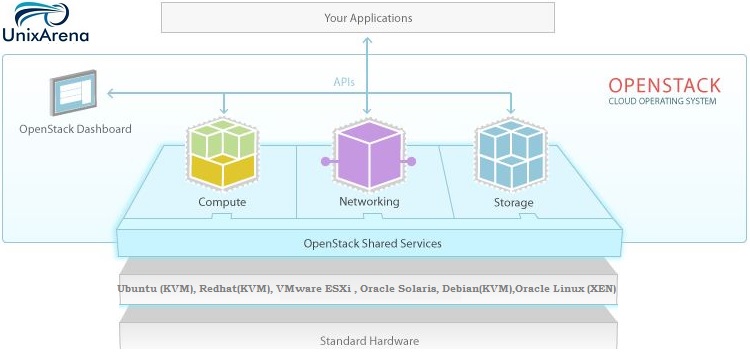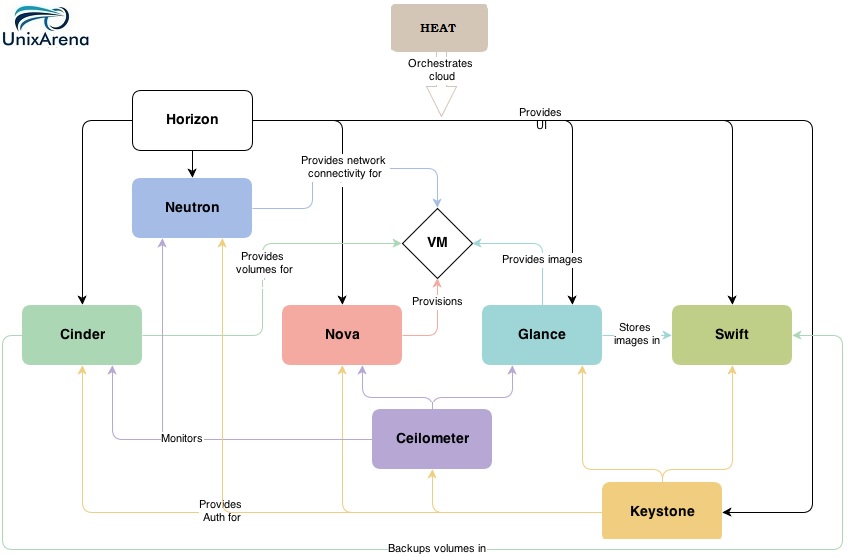Let’s talk about Openstack architecture and Components . In the last article ,we have seen the history of private cloud softwares and Openstack. OpenStack is a cloud computing platform that controls large number of compute nodes , storage, and networking resources throughout a datacenter, all managed through a dashboard(Horizon) that gives administrators control while empowering their users to provision resources through a web interface. Openstack provides an Infrastructure-as-a-Service (IaaS) solution through a set of interrelated services.
Here is the list of openstack Services , project name and description.
| Service | Project name | Description | Requirement |
| Dashboard | Horizon | Web-Based Dashboard | Mandatory |
| Compute | Nova | Create virtual Machine & manage VM | Mandatory |
| Networking | Neutron | Software defined networking (Advanced Networking) | Optional |
| Object Storage | Swift | Store files & Directories | Optional |
| Block Storage | Cinder | Volume & Snapshot Management | Mandatory |
| Identity service | Keystone | Creating Projects/User/Roles/Token Management/Authentication | Mandatory |
| Image Service | Glance | To Manage OS Images | Optional |
| Telemetry | Ceilometer | Monitoring & Billing purpose | Optional |
| Orchestration | Heat | HOT(Heat Orchestration Template) based on YAML | Optional |
| Database Service | Trove | Database as a Service | Optional |
| Hadoop as Service | sahara | Hadoop as Service | Optional |
| Messaging | RabbitMQ | Messaging | Mandatory |
Refer more at http://docs.openstack.org.
Conceptual architecture
The below diagram shows how the openstack components are interconnected.
How Openstack works ?
Openstack can’t be directly installed on hardware. It requires operating systems which supports virtualization in the back-end. At present , Ubuntu(kvm), Redhat enterprise Linux(kvm) , oracle Linux(xen) , Oracle Solaris(zones), Microfsoft Hyper-v, VMware ESXi supports openstack cloud platform. That’s why openstack is the strategic choice of many types of organizations from service providers looking to offer cloud computing services on standard hardware, to companies looking to deploy private cloud, to large enterprises deploying a global cloud solution across multiple continents. Rackspace and HP are offering public cloud via openstack cloud platform.

Hope this article is informative to you. In the next article ,we will see the deployment of Openstack on Ubuntu.

amare says
its clear and thank you for your explanation but please include how the kvm and the openstack is integrated
Tushar says
Please provide Conceptual architecture including Trove inside it.
Sunil says
Informative. Thank you so much.